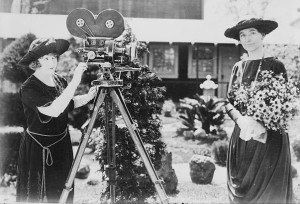Ten Tips for Book Trailer Makers
I made my first Book Trailer back in 2007, when the whole Book Trailer thing was really starting to take off. Since then, I’ve seen million dollar Book Trailers and I’ve seen Book Trailers done on a shoestring budget. Sometimes, it’s been hard to tell the difference – in good ways and bad ways.
Sometimes, it’s been hard to tell the difference – in good ways and bad ways.
The challenge is always the same. A minute and a half (maybe more, maybe less) to entrance viewers, to captivate and fascinate them, to make them think that the book that is featured is the best thing ever and they simply have to go out and read it.
All in ninety seconds.
I’ve put together a few ideas for those attempting to put together a Book Trailer. I’m aiming these tips mostly at young people in schools, but the general principles are the same for everyone.
- Watch some Movie Trailers. Book Trailers began when someone looked at awesome Movie Trailers and said, ‘Hang on a minute …’. The general principles of Movie Trailers are applicable to Book Trailers. Watch how Movie Trailers are paced. What do they start with? Where is the turn/change of tone? How is music used? Valuable lessons here.
- Software really doesn’t matter. You can produce great Book Trailers with PowerPoint or MovieMaker or iMovie, or you can use full-on video editing software like Adobe Premiere. Sure, top end software gives you more fancy effects, but these can actually get in the way of a clear, effective Book Trailer. Don’t just add a special zoomy/clicky/diffusing thing because you can – use it when it helps. In fact, special stuff is best used sparingly, if you have access to it.
- Know your book, back to front. This is essential. If you’re going to make an effective Book Trailer, you have to know what happened to whom, when and where. And you have to have a good feel for the book, in order to get the right look and sound for your trailer. It’s no good reading the back cover, thinking the book is a murder mystery and it’s actually a light-hearted romance.
- Decide on your approach. Are you going to use some or all of film sequences, still images, text, voiceover and music?
- NO SPOILERS!
- Don’t overcrowd your Book Trailer. Keep text to a minimum. Hit the highpoints. Be selective. Make people want to rush out and read the book because you’ve shown them some good stuff – and there must be more in the whole book!
- Make sure you end with the name of the book and the author. You don’t want to have a bewitching, fascinating trailer and leave people scratching their head and saying, ‘I liked it, but what the heck was the name of the book?’
- Don’t try to retell the entire story. You only have a minute or so. Introduce characters, setting and give some idea of what happens (love, murder, kidnap, alien invasion).
- Don’t be boring. Grab attention at the start and don’t let go. Make your audience gasp, laugh, cry, recoil in horror, SOMETHING!
- If you’re aiming to make your Book Trailer public, then get to know your copyright laws. For instance, it can be dicey to take your favourite song and use it on your Book Trailer (‘Because it’s just so perfect!’). Likewise with images you don’t own.
Book Trailers are tiny, complete examples of storytelling, with their own language, rules and appeal. Having to work within the small time available is demanding, but sometimes a challenge produces brilliance. After all, you need great heat and pressure to make diamonds!